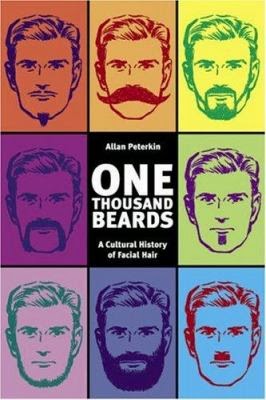Scholarly if not scraggly, foppish if not virile, it is “the growth of hair on the face of an adult man” (dictionary.com), but it is no mere biochemical symptom of gender. According to Allan Peterkin's book, One Thousand Beards: a Cultural History of Facial Hair, the beard has symbolized many things, from fashion-pariah to flag of allegiance to political traitor.
It is said that condemned Sir Thomas More, on the block about to be beheaded, pushed his beard aside and said: “My beard has not been guilty of treason. It were an injustice to punish it.”
It was true that More was a man of both great composure and wit, but this is what he says at his death?
I remember reading Shakespeare and wondering what all the fuss was about. Hamlet complains in his play (Hamlet II.ii.544-5): “Who calls me villain? Breaks my pate across? Plucks off my beard, and blows it in my face?” and so does King Lear’s Gloucester (King Lear III.vii. 36): “By the kind gods, ’tis most ignobly done To pluck me by the beard.”
Such references even show up in nursery rhymes! “Not by the hair on my chinny-chin-chin” is the oath of each of the Three Little Pigs.
Swear on your facial hair? What is that worth? Well!
Peterkin enlightens us.
Beards have been taxed (100 rubles per year during Russia’s Peter the Great’s reign), waxed, beaded, dyed, metallized, plucked, pumiced, and scraped. They are even named—ever heard of the “Saucer Beard” ? The “Sugar Loaf”? The “Swallowtail”? One’s political, military or religious status all had power over one’s whiskers.
Peterkin covers historical beards, political beards (essentially who told whom to shave or grow, depending) and contemporary beards, including the beard in psychology (Peterkin, who is a U of T professor of psychiatry, enjoyed critiquing the various Freudian ideas) and in 20th-century popular culture, especially North American gay culture and American celebrity culture. Peterkin also tells us how to shave to achieve each particular fuzzy look and how it was done over the past couple thousand years.
I learned new words, too: “deracinated” (“to pull up by the roots” according to dictionary.com) and “pogonotrophy” (“the act of cultivating, or growing and grooming, a mustache, beard, sideburns or other facial hair” according to wiktionary.org). Who knew hirsuteness could sprout wordiness?
The best story from this book is the one that claims cause for hundreds of years of war between France and England.
“In the mid-1150s, Louis [VII of France] reputedly felt guilty for having burned alive several hundred refugees in a church in Vitry. For spiritual guidance, he consulted Peter Combard, the Bishop of Paris at the time, who told him to shave as penance. Unfortunately, his wife and queen, Eleanor of Aquitaine, was so aghast at his bare face that she had the marriage annulled. Not only that, she promptly married the much-whiskered Henry II, King of England. When her dowry, including Aquitaine itself, was ceded to England, some 300 years of war ensued. Now we know: the chronic French-English tensions long ascribed to everything from language to fashion-sense are actually the result of a beard.”
Notwithstanding the earlier 1066 invasion of England by William of Normandy (and the messy re-marrying done earlier still) and the Napoleonic defeat in 1813, the loss of that French beard must have helped along almost 1000 years of strife between France and England.


No comments:
Post a Comment